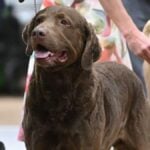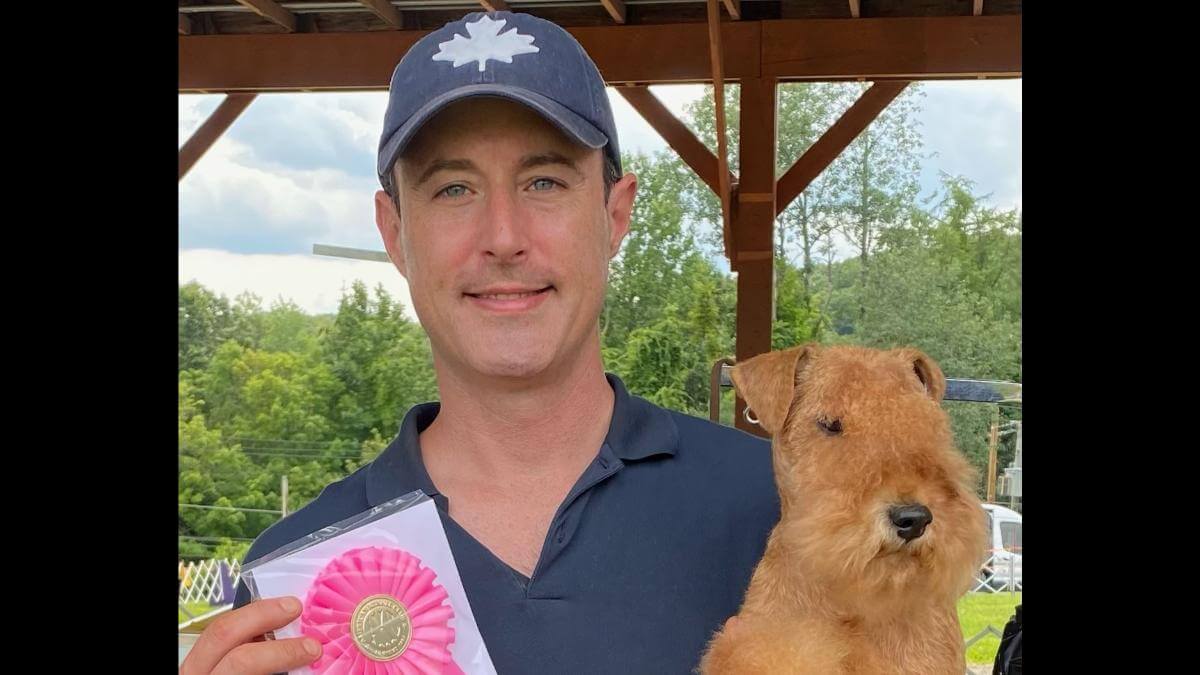
Home » Mark Brandsema | Wakefield Lakeland Terriers

Mark Brandsema
1. I acquired my first Lakeland Terrier as a Junior Handler in 1996, and had my first litter two years later. Over the past 25 years, from a small breeding program, we’ve produced several dozen Champions, including several all-breed Best in Show winners and Specialty winners, mostly owner-handled and never heavily campaigned. We’ve exported dogs internationally and shared breeding stock with breeders in North America, and I’d like to believe we have played a small supporting role in continuing the high quality our breed enjoys. My kennel name, Wakefield, was established in my native Canada, and I relocated to the Philadelphia area 12 years ago.
2. In my view, the hallmark of the Lakeland Terrier is overall balance and moderation. This breed should present no extremes; correct type comes from a pleasing symmetry of all pieces harmoniously flowing together, free from any exaggeration. A notable exception to this is temperament. While the physical conformation of a correct Lakie is moderate, their great exuberance is often anything but. For that reason, they often make very successful show dogs.
3. There has been a notable decline in puppy interest, particularly among new prospective owners. I find most of our puppies in the last five years have gone to previous Lakie owners. There has been enough interest in our own dogs for us to justify breeding a litter or two a year; however, I am hearing concerns from other breeders, particularly in less populous regions of the country.
4. I can’t say that I have; however, I really should. I started a Facebook page for our breeding program some years ago, but I’ve not been very good at maintaining it. I’m just not very interested in being active on social media, although I realize that this seems to be the direction the world is headed in and I’d be well-advised to adapt to that.
5. Purebred dogs once seemed to be a mark of pride among dog owners. That seems to have changed dramatically in favor of rescues and designer breeds. At one point, owners could proudly say, “My (purebred) dog comes from a long line of Champions.” Now, it seems that people more often boast of having rescued a dog, and the more desperate and heart-breaking circumstances of the rescue, the better. The rescue community has done an amazing job at promoting their interests.
6. It goes without saying: the precipitous decline in entries. This gets debated often and I wish I could offer the solution.
7. I love to see young people get involved in the sport and have mentored many over the years, as well as supported several of our co-owners in showing their own dogs. I love watching Junior Showmanship, and the talent is really amazing to me. I am thrilled to see owner-handlers succeed, in any breed, and to that end I think the National Owner-Handled Series (NOHS) has been a strong asset for the sport.
Initially, I was skeptical about this program; however, I’ve since changed my mind. It provides owner-handlers a goal to work toward and a venue where they can be on a more equitable playing field than the regular Group ring, which often means direct competition with seasoned professionals. I love to see talented owner-handlers succeed in both rings, and the two competitions seem to be mutually supportive of one another.